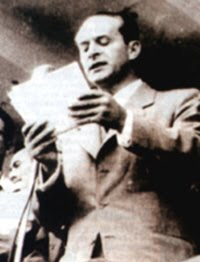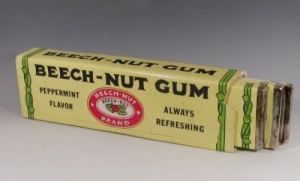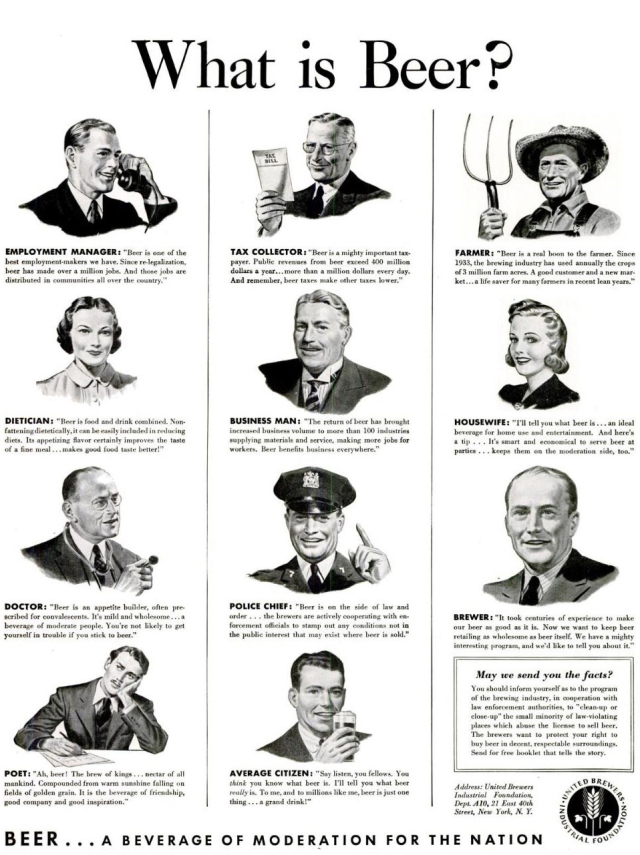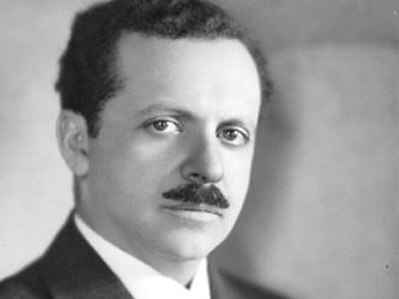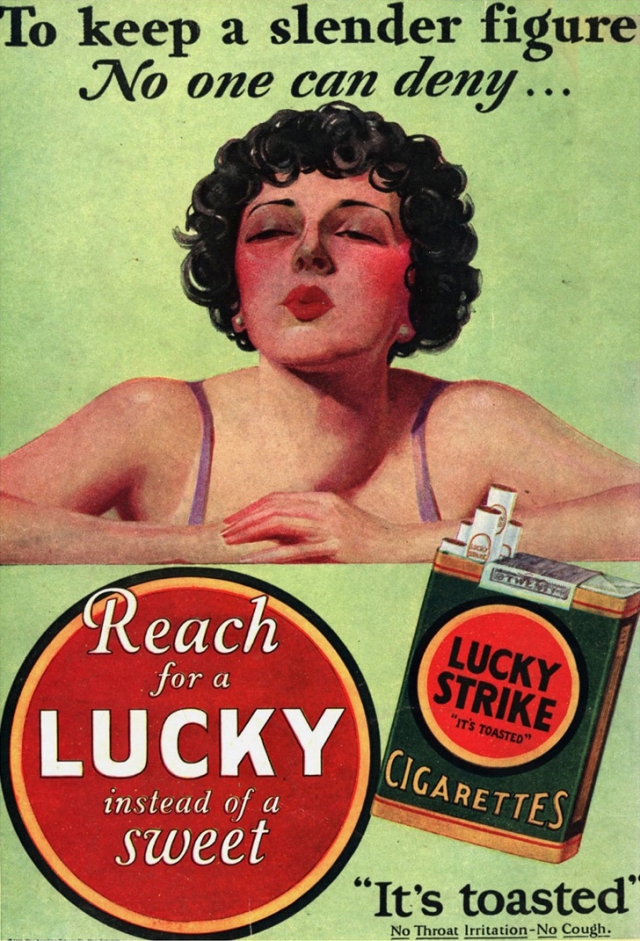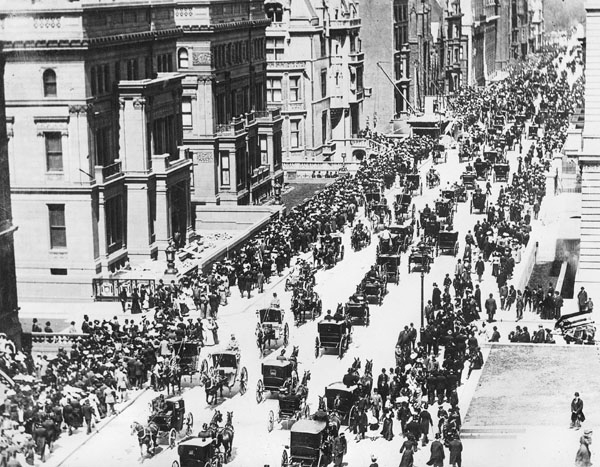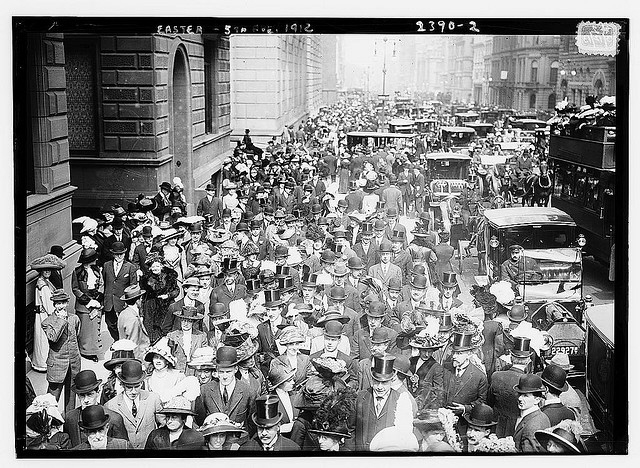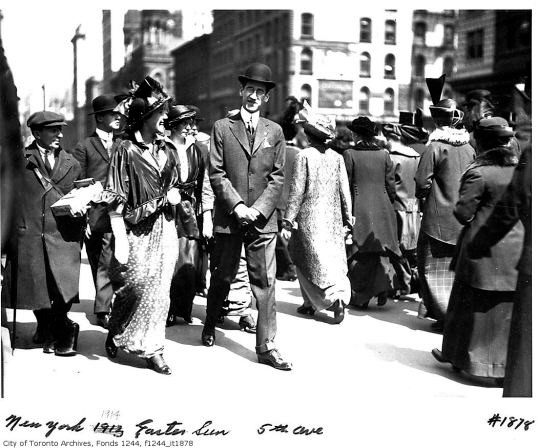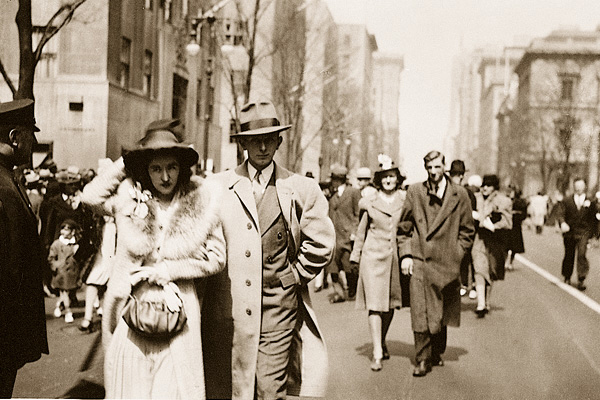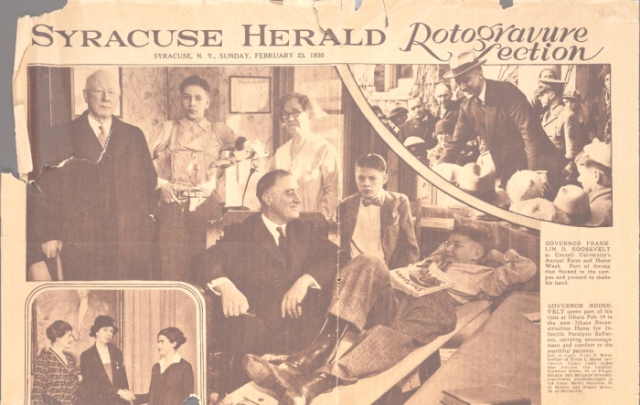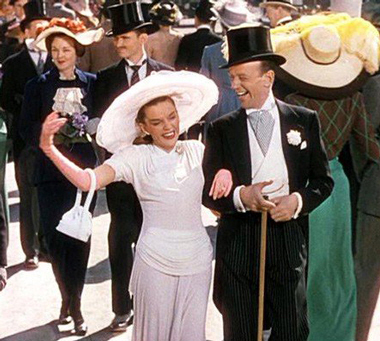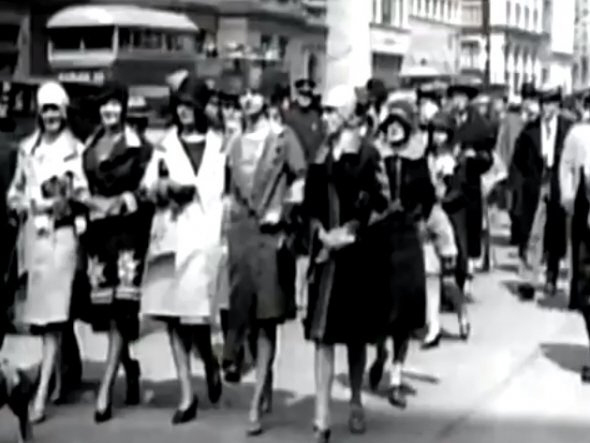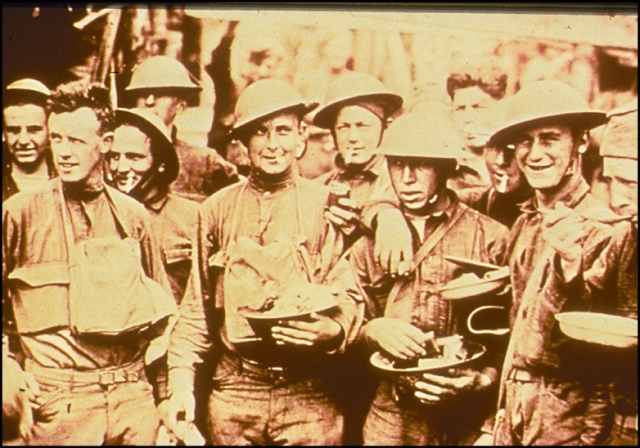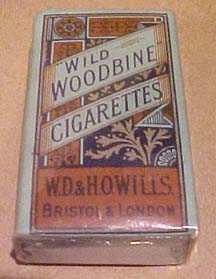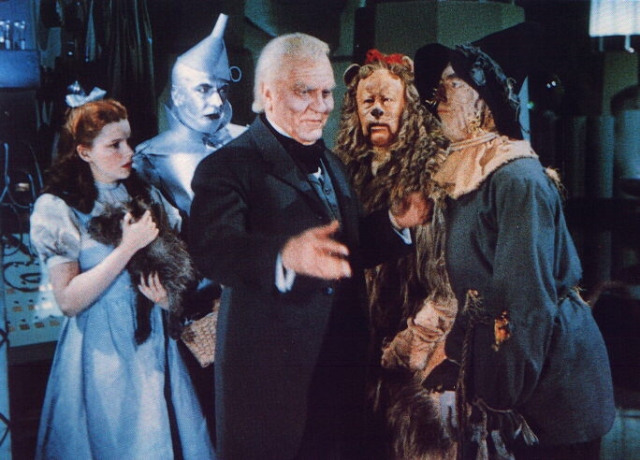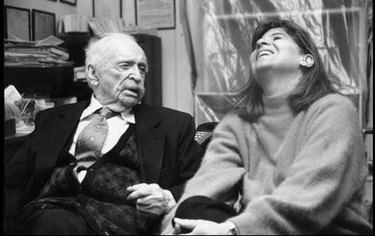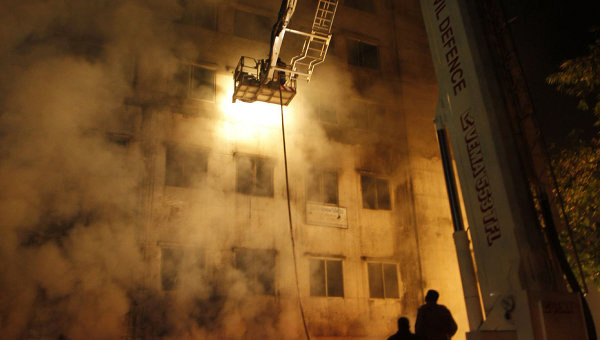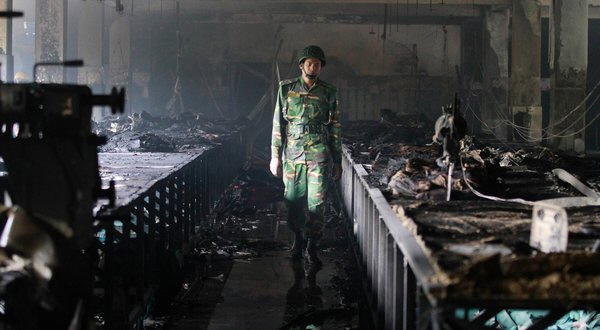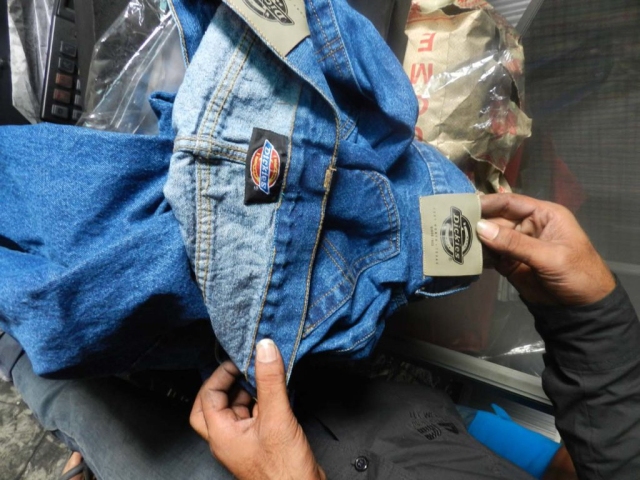Series: Oh Say Can You See? V: The American Way
Entry 10:
Steaming Toward War
(This is the tenth entry in a series on The American Way. Be sure to start with Entry 1
in order to understand the following material in context.)
My daughter and her husband have been on several short Caribbean cruises on ships of the Carnival Cruise Lines because her father in law is employed as a musical entertainer on Carnival Cruise ships like the Ecstasy:
 In fact, they took our granddaughter on such a cruise this spring as a high school graduation present. Embarking from Port Canaveral, Florida, a five day cruise takes passengers for short stops at two or three ports in the Caribbean to do a little sightseeing and shopping, along with a day or two on “the high seas” where they can just enjoy the view—or the many onboard amenities. These huge pleasure ships feature a variety of musical shows, a casino, swimming pools, spas, game rooms, special activities for children and teens, and more.
In fact, they took our granddaughter on such a cruise this spring as a high school graduation present. Embarking from Port Canaveral, Florida, a five day cruise takes passengers for short stops at two or three ports in the Caribbean to do a little sightseeing and shopping, along with a day or two on “the high seas” where they can just enjoy the view—or the many onboard amenities. These huge pleasure ships feature a variety of musical shows, a casino, swimming pools, spas, game rooms, special activities for children and teens, and more.
 It’s a “self-contained” vacation, with the price of all meals included, onboard motel-style rooms—and the famous unlimited eating opportunities.
It’s a “self-contained” vacation, with the price of all meals included, onboard motel-style rooms—and the famous unlimited eating opportunities.

 While doing some research for this series of blog entries, I was surprised to find that such “pleasure cruises” are a relatively recent phenomenon, unknown much more than 100 years ago. I guess because of knowing about the Titanic and other luxury liner steamships of its time, I thought that cruise vacations were common back then.
While doing some research for this series of blog entries, I was surprised to find that such “pleasure cruises” are a relatively recent phenomenon, unknown much more than 100 years ago. I guess because of knowing about the Titanic and other luxury liner steamships of its time, I thought that cruise vacations were common back then.
 The Titanic wasn’t the first of its kind, only the biggest. Such luxury liner steamships had been taking people across the Atlantic since the 1830s. But it didn’t dawn on me until I read the details, that the Titanic (and its smaller predecessors) wasn’t a “luxury cruise” ship at all. Oh, don’t get me wrong… it was certainly luxurious enough to compete, and surpass in some ways, the Carnival Cruise Line of today!
The Titanic wasn’t the first of its kind, only the biggest. Such luxury liner steamships had been taking people across the Atlantic since the 1830s. But it didn’t dawn on me until I read the details, that the Titanic (and its smaller predecessors) wasn’t a “luxury cruise” ship at all. Oh, don’t get me wrong… it was certainly luxurious enough to compete, and surpass in some ways, the Carnival Cruise Line of today!
It had splendiferous surroundings…
 Sprawling dining rooms with first-class cuisine…
Sprawling dining rooms with first-class cuisine…
 A heated indoor pool (with sea water)…
A heated indoor pool (with sea water)…
 And a first-class gymnasium open to men and women.
And a first-class gymnasium open to men and women.

 It even had a Turkish Bath/Spa room…
It even had a Turkish Bath/Spa room…
 Undersea explorations of the Titanic wreckage in 2005 even gave us an amazing glimpse of what that spa originally looked like. In a black and white picture, it looks quite drab. But look at this ACTUAL photo of the incredibly well-preserved spa room as it looks now at the bottom of the ocean. You can see the ceramic tiled walls with colors still almost as bright as when they were brand new in 1912.
Undersea explorations of the Titanic wreckage in 2005 even gave us an amazing glimpse of what that spa originally looked like. In a black and white picture, it looks quite drab. But look at this ACTUAL photo of the incredibly well-preserved spa room as it looks now at the bottom of the ocean. You can see the ceramic tiled walls with colors still almost as bright as when they were brand new in 1912.
 But in spite of all this, Titanic wasn’t a cruise ship. A cruise ship’s goal is to be the “home away from home” of a vacationer, picking them up from a central port, entertaining them for a while on water (with a few on-shore junkets along the way), and then returning them to where they embarked. The Titanic was a passenger liner that had as its main goal being a “mode of transportation” for people traveling between Europe and the United States. Yes, it provided them luxury and entertainment along the way, but that was a side benefit of using it as their mode of transportation. Once they got to the United States or to Europe, they would disembark and go about other business.
But in spite of all this, Titanic wasn’t a cruise ship. A cruise ship’s goal is to be the “home away from home” of a vacationer, picking them up from a central port, entertaining them for a while on water (with a few on-shore junkets along the way), and then returning them to where they embarked. The Titanic was a passenger liner that had as its main goal being a “mode of transportation” for people traveling between Europe and the United States. Yes, it provided them luxury and entertainment along the way, but that was a side benefit of using it as their mode of transportation. Once they got to the United States or to Europe, they would disembark and go about other business.
No, actual “vacation cruising” was only getting started around the time of the Titanic. The very first vacation/cruising ships were…banana boats!
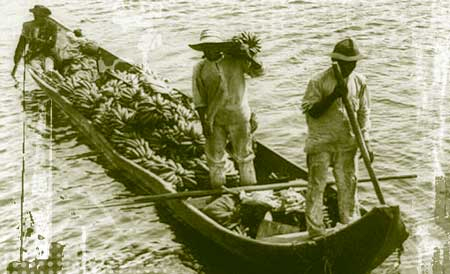 No, no. Not that kind of banana boat shown above. That kind of boat was only for bananas. Here is the kind of banana boat that first introduced the world to “pleasure cruising.”
No, no. Not that kind of banana boat shown above. That kind of boat was only for bananas. Here is the kind of banana boat that first introduced the world to “pleasure cruising.”
 See the caption? Yes, these “cruise line” ships were owned by the United Fruit Company, employer in the 30s, 40s, and 50s of the Father of Spin, Eddie L Bernays. As explained in the previous entry in this series, Eddie helped the UFC with its “public relations.” And a whole lot more.
See the caption? Yes, these “cruise line” ships were owned by the United Fruit Company, employer in the 30s, 40s, and 50s of the Father of Spin, Eddie L Bernays. As explained in the previous entry in this series, Eddie helped the UFC with its “public relations.” And a whole lot more.
Starting in the late 1800s, big steam ships owned by fruit companies began regularly shuttling back and forth between the US mainland and the tropical fruit-producing countries of the Caribbean and Central and South America, bringing fruit (probably the “lion’s share” of it bananas) to American markets. Some time around 1900 it occurred to someone in the UFC management that their ships weren’t really making any money on the portion of their trips headed south empty—so why not offer to take passengers along to help defray expenses, then return with passengers and bananas? Although I don’t doubt that some of the time these banana boats were carrying passengers on their way to do business in the Latin American countries, it didn’t take long for the company to realize that there was a market for providing a luxurious two and three week “vacation cruise” experience for a middle and upper class clientele.
From an early advertisement for UFC cruises:
The “Admiral” steamships operated by this company are American built twin-screw vessels, and are especially adapted to tropical travel. They have commodious promenade decks, cool and airy, well-ventilated staterooms situated on the main and hurricane decks amidships, thus insuring a minimum of sea motion. The dining saloon is located on the main deck well forward of the engine room, and removed from all disagreeable odors incident. Bathrooms are supplied with fresh or sea water and are at the disposal of passengers at all times. The table is made an especial feature of these boats, and is supplied with every delicacy the northern and tropical markets afford.
The ships are furnished throughout with a perfect system of electric lighting and steam heating.The stewards and waiters are unremitting in their duties and everything is done for the comfort and convenience of the passengers.
Yes, sounds pretty much just like a Carnival Cruise now! And as it turned out, there was a large market for such luxury vacations among the pre-jet-set of the time.
1914:
 1915:
1915:
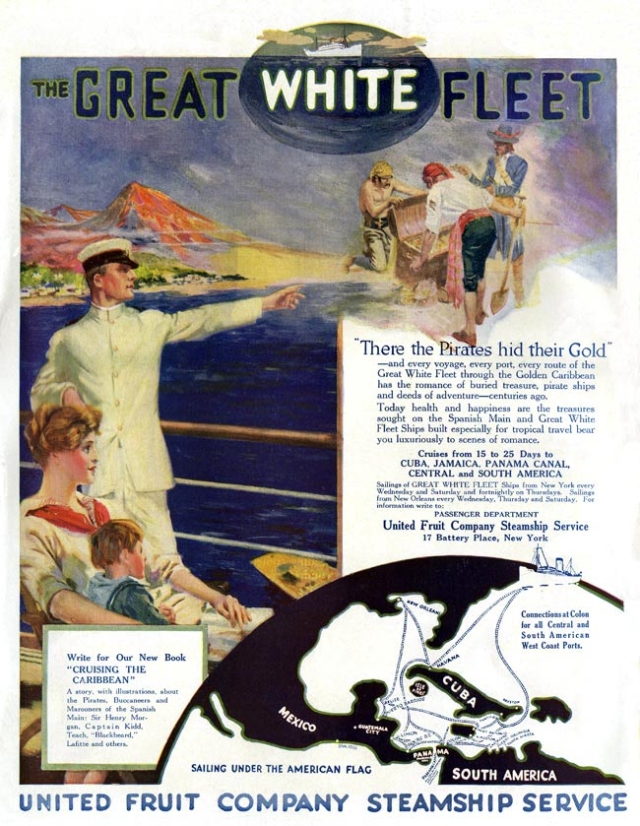 1916:
1916:
 1919:
1919:
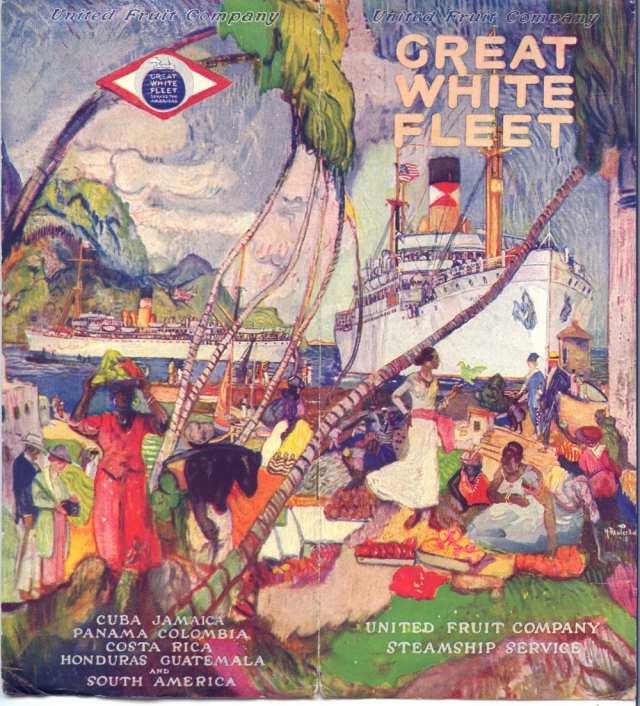
1927:
 You’ll notice the ads above call the United Fruit Company’s steam ships the “Great White Fleet.” They started applying this name for their ships shortly after 1910:
You’ll notice the ads above call the United Fruit Company’s steam ships the “Great White Fleet.” They started applying this name for their ships shortly after 1910:
http://en.wikipedia.org/wiki/Great_White_Fleet
In the twilight of United States President Theodore Roosevelt’s administration, Roosevelt dispatched sixteen U.S. Navy battleships of the Atlantic Fleet [along with lots of other smaller accompanying vessels] on a worldwide voyage of circumnavigation from 16 December 1907 to 22 February 1909. The hulls were painted white, the Navy’s peacetime color scheme, decorated with gilded scrollwork with a red, white, and blue banner on their bows. These ships would later come to be known as the Great White Fleet.
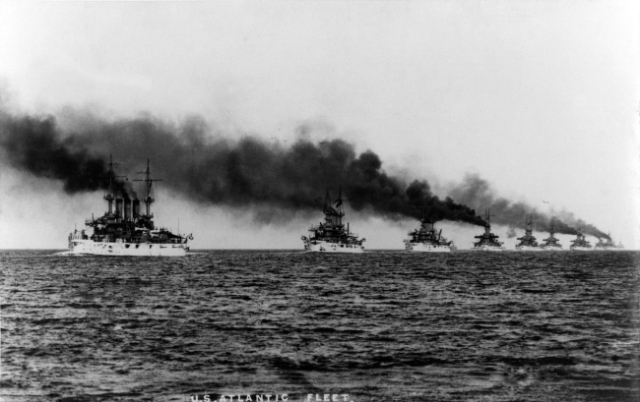 The purpose of the fleet deployment was multifaceted. Ostensibly, it served as a showpiece of American goodwill as the fleet visited numerous countries and harbors. … Additionally, the voyage of the Great White Fleet demonstrated both at home and on the world stage that the US had become a major sea power in the years after its triumph in the Spanish-American War, with possessions that included Guam, the Philippines, and Puerto Rico.
The purpose of the fleet deployment was multifaceted. Ostensibly, it served as a showpiece of American goodwill as the fleet visited numerous countries and harbors. … Additionally, the voyage of the Great White Fleet demonstrated both at home and on the world stage that the US had become a major sea power in the years after its triumph in the Spanish-American War, with possessions that included Guam, the Philippines, and Puerto Rico.
… The Great White Fleet showed that, without having to fire a shot, the US Navy could take control of the seas with an overwhelming display of naval might, and it demonstrated the practical import of Admiral Alfred Thayer Mahan’s theories on the use of sea power to project global power. Since Japan had arisen as a major sea power with the 1905 annihilation of the Russian fleet at Tsushima, the deployment of the Great White Fleet was therefore intended, at least in part, to send a message to Tokyo that the American fleet could be deployed anywhere, even from its Atlantic ports, and would be able to defend American interests in the Philippines and the Pacific.
This “publicity campaign” was very impressive to a lot of Americans, and it had a high popularity rating.
 But there were some skeptics. Not everyone in the US was ALL that impressed with this sabre rattling.
But there were some skeptics. Not everyone in the US was ALL that impressed with this sabre rattling.
 In any event, soon after the completion of this “Speak softly and carry a big stick” demonstration by Roosevelt, the UFC decided to nickname its own brightly-white-painted fleet the same way. No doubt to take advantage of the built-in publicity factor. And, in fact, after WW1 it eventually bought a number of decommissioned US Navy vessels and pressed them into Banana Boat service. The Great White Fleet eventually became the largest privately-owned fleet of ships in the world. During WW2, the services of the UFC’s Great White Fleet were put at the disposal of the US military to transport troops and war supplies.
In any event, soon after the completion of this “Speak softly and carry a big stick” demonstration by Roosevelt, the UFC decided to nickname its own brightly-white-painted fleet the same way. No doubt to take advantage of the built-in publicity factor. And, in fact, after WW1 it eventually bought a number of decommissioned US Navy vessels and pressed them into Banana Boat service. The Great White Fleet eventually became the largest privately-owned fleet of ships in the world. During WW2, the services of the UFC’s Great White Fleet were put at the disposal of the US military to transport troops and war supplies.
Yes, the United Fruit Company was not only one of the most profitable companies in America by the 1940s, through its “service to the nation” it also had influence and “connections”…direct and indirect…with the US government—and many US politicians, military leaders, and other governmental officials. And thus the financial interests of the UFC were intertwined with the political interests and finances of the US—and of US officials.
This reality was to be put to great use later by the corporation—and its Public Relations consultant, Eddie Bernays.
At the same time, as noted in the previous entry in this series, the UFC also had extensive dealings with and influence over the governments of a number of Caribbean, Central, and South American nations. They weren’t called “Banana Republics” for nothin’! This had been going on since the earliest years of the century. For instance, here is a news item from Time Magazine, November 25,1929:
Costa Rica. Limón is the chief Costa Rican port on the Caribbean. And Port Limón is the creation of U. F. C. The docks are owned by U. F. C.; the railroad from the port to the capital (San Jose) is operated by U. F. C.; of the townspeople of Port Limón, 95% are employees of U. F. C. And only U. F. C. ships touch at Port Limón. Hence last week, when U. F. C. threatened to suspend trade with Costa Rica, Port Limón had reason to feel that life itself was being threatened.
Cause of United Fruit Co.’s drastic threats was Costa Rica’s new law placing a tax of 3% a bunch upon bananas, second only to coffee in Costa Rican economics. Angry, the U. F. C. declared it would be cheaper to open new plantations in other countries, showed its annoyance by stopping new planting in Costa Rica, refusing to renew contracts with independent growers. United Fruit Co. trade is essential to Costa Rica. Last year Costa Rica’s revenues came to $33,318,699, those of the fruit company to $20,606,393. Observers last week believed the law would be repealed.
Yes, Costa Rica was a Banana Republic.
As was Honduras. As noted in the last blog entry, UFC president Sam Zemurray once had the chutzpah to remark, braggingly: “In Honduras, a mule costs more than a member of parliament.” And Eddie Bernays, a king of chutzpah in his own way, admired Zemmuray’s chutzpah in the area of politics/corporate leadership:
Bernays admiringly related this anecdote of Samuel Zemurray, the Chairman of United Fruit’s board, from one of their many conversations. “A man who could concentrate on his conversation while reports were brought to him of three disasters at sea involving loss of lives, cargoes and money, was fitted by temperament to direct an American industrial and agricultural complex in the Middle American jungles.” Zemurray would “glance at each” disastrous report handed him then offhandedly “toss it into the trash.” Now that’s Leadership!
This kind of chutzpah did them both well when they arrived at a need to start a war to “protect the interests” of UFC in another of its Banana Republics, Guatemala.
 Other than bananas, Guatemala is most famous for its beautiful ruins of the ancient Mayan culture. Yes, the Mayans with that famous calendar that got so many people excited in 2012!
Other than bananas, Guatemala is most famous for its beautiful ruins of the ancient Mayan culture. Yes, the Mayans with that famous calendar that got so many people excited in 2012!
 Most US children study the ancient cultures of the Aztecs and Mayans of Middle America when they are in grade school. I know I did. What I didn’t realize, and I don’t think many other people realize either, is that while the Aztec civilization disappeared totally (except for ruins now) and its people were either destroyed or totally absorbed into populations around them, the Mayan people still exist as a recognizable group today. The largest concentration of them is in Guatemala. Guatemala’s population is about 13 million, and over 40% are people of direct Mayan descent. Most speak Mayan language dialects too, totally unrelated to the Spanish-based dialects around them.
Most US children study the ancient cultures of the Aztecs and Mayans of Middle America when they are in grade school. I know I did. What I didn’t realize, and I don’t think many other people realize either, is that while the Aztec civilization disappeared totally (except for ruins now) and its people were either destroyed or totally absorbed into populations around them, the Mayan people still exist as a recognizable group today. The largest concentration of them is in Guatemala. Guatemala’s population is about 13 million, and over 40% are people of direct Mayan descent. Most speak Mayan language dialects too, totally unrelated to the Spanish-based dialects around them.

 The UFC had been busy in Guatemala since its earliest days—the government of Guatemala in 1901 had hired the UFC to manage the country’s postal service, and it had been intimately enmeshed in the affairs of the country since then.
The UFC had been busy in Guatemala since its earliest days—the government of Guatemala in 1901 had hired the UFC to manage the country’s postal service, and it had been intimately enmeshed in the affairs of the country since then.
By the mid-1950s … Guatemala was a hot spot and had been since 1944, when a mass uprising ended the fourteen-year rule of military strongman General Jorge Ubico Castañeda. Juan José Arévalo, a professor living in exile in Argentina, returned home and was swept into office in 1945 with more than 85 percent of the vote.
Arévalo faced overwhelming obstacles, from 70 percent illiteracy to more than 70 percent of the land being held by just 2 percent of the population. But he began to make changes, introducing a democratic political system, overseeing construction of new schools and hospitals, establishing a limited social security network, and giving workers the right to organize and strike. He also pursued limited land reform and distributed property confiscated from Germans and Nazi sympathizers. And he managed to survive more than two dozen plots to unseat him.
In March 1951 Arévalo was succeeded by his defense minister, Jacobo Arbenz Guzmán.
 Arbenz picked up the pace of change, enacting a modest income tax, upgrading roads and ports, and, most significantly, implementing a plan to redistribute uncultivated lands of large plantations, paying the old owners with government bonds. Between 1952 and 1954 the Arbenz government confiscated and turned over to 100,000 poor families 1.5 million acres— including, in March of 1953, some 210,000 acres of United Fruit Company holdings. [Larry Tye, The Father of Spin: Edward L. Bernays and The Birth of Public Relations. Unless otherwise noted, all further quotes in this entry are from this book.]
Arbenz picked up the pace of change, enacting a modest income tax, upgrading roads and ports, and, most significantly, implementing a plan to redistribute uncultivated lands of large plantations, paying the old owners with government bonds. Between 1952 and 1954 the Arbenz government confiscated and turned over to 100,000 poor families 1.5 million acres— including, in March of 1953, some 210,000 acres of United Fruit Company holdings. [Larry Tye, The Father of Spin: Edward L. Bernays and The Birth of Public Relations. Unless otherwise noted, all further quotes in this entry are from this book.]
Now mind you, what Arbenz did wasn’t just “grab” those lands from UFC. It arranged to PAY the company for them. And they weren’t lands that the UFC was actually using. The land was “fallow”—not being used for crop production at all. It was part of the vast amount of “reserve” land that UFC had received practically free from earlier regimes, and claimed to be holding “just in case” some future problem—say a hurricane—wiped out some of its productive land and it needed to replace it. While it held this land in an unproductive state for decades, vast numbers of the huge population of peasants in Guatemala had NO farming land, and many if not most of them in banana producing areas eked out a near-starvation living for their families through employment with UFC.
The fruit company had chosen Guatemala half a century earlier in large part because of its cooperative government. That choice had been reinforced over the years as Guatemalan leaders exempted the company from internal taxation, let it import goods duty-free, helped it maintain control of the country’s only Atlantic seaport and virtually every mile of railroad, and guaranteed that workers would earn no more than fifty cents a day. It was a capitalist’s dream.
By the time Arévalo took over, United Fruit was Guatemala’s number one landowner, employer, and exporter. The Arévalo reign raised a red flag for the company. Workers went on strike at its banana plantation and seaport, forcing it for the first time to make concessions in a labor contract, and the fruit company was targeted as Guatemala’s most glaring symbol of hated Yankee imperialism. If Arévalo was a portent, Arbenz was the realization of the dreaded prophecy. He wanted to build a highway to the Atlantic to break United Fruit’s stranglehold on inland transport, a second port to compete with United’s facilities at Puerto Barrios, and a hydroelectric plant to end the near-monopoly of U.S.-backed power suppliers.
This Banana Republic was fast becoming a Banana Nightmare for UFC! Earlier dictators had been UFC lap-dogs, tucking tail and giving in to their every wish. This new top dog …
…wanted to take another 177,000 acres of the fruit company’s land, bringing the total to nearly 400,000 acres. The company would be reimbursed at about $ 3 an acre. That was what United Fruit said in its tax statements the fallow land was worth— far less than the $ 75 an acre it claimed once the land was expropriated.
Expropriated. That’s the fancy word describing a process where a government claims the right to acquire the land of some entity within its boundaries, even if the entity doesn’t want to sell it, usually in order to accomplish some purpose in the public interest—often distributing it to the poor. It is typical to compensate the previous owners according to the actual value of the property. You’d think that the “actual value” would be agreed upon by the previous owner when they stated “how much it is worth” in establishing how much tax they owed on it …in this case, $3 an acre. But of course, I’m pretty sure that UFC’s reaction is a typical reaction in such cases. The “value of the land” miraculously increases the day they are in danger of losing it.
Many folks are totally against the whole idea of “expropriation of land” because it seems so “unfair.” But of course in this instance, as in many instances of international expropriation, the way the land was “appropriated” by the owners in question in the first place was never “fair.”
But the purpose of this blog story isn’t to debate the fairness or propriety of Arbenz’s actions. I’ll leave that to folks on politically-charged forums to debate. My purpose here is to just chronicle what happened next.
And what happened next is that it thus came time for the Father of Spin to beginning spinning the wheels of Public Relations to counter this threat.
All of this reinforced alarms Bernays had been sounding since he visited the region early in the Arévalo regime. He now warned that Guatemala was ripe for revolution and that the Communists were gaining increasing influence over Guatemala’s leaders. And he counseled the company to scream so loud that the United States would step in to check this threat so near its border. Company officials were unconvinced at first but Bernays pushed ahead and, as the political situation in Guatemala heated up, he ratcheted up his counteroffensive.
Notice that Eddie didn’t suggest that they complain to the US government that their financial interests were being threatened. No, Eddie always used the back door. Couch what was ultimately in the best interests of UFC—getting rid of Arbenz and his reforms—in terms of the national interests of the US in its Cold War conflict with Russia.
Also as usual, Eddie decided to start his campaign by creating a network of people in the public media who could churn out positive PR for his goal. Not writing about the woes of the UFC trying to keep control of its Banana Republic so it could keep its fantastic profit margins. No, writing about the threat to the interests of every red-blooded American in keeping the Red Menace in check.
In fact, he’d begun planning such a blitz months before, as he told Whitman in a November 1950 letter. He had picked out ten widely circulated magazines, including Reader’s Digest, the Saturday Evening Post, and Harper’s, and said each could be persuaded to run a slightly different story on the brewing Guatemalan crisis much the way they were covering the ongoing battle between the railroads and truckers. “In certain cases, stories would be written by staff men,” Bernays wrote. “In certain other cases, the magazine might ask us to supply the story, and we, in turn, would engage a most suitable writer to handle the matter.”
While the United Fruit Company didn’t move as quickly as Bernays wished, it did move, and articles began appearing in the New York Times, the New York Herald Tribune, the Atlantic Monthly, Time, Newsweek, the New Leader, and other publications, all discussing the growing influence of Guatemala’s Communists. The fact that liberal journals like The Nation were also coming around was especially satisfying to Bernays, who believed that winning the liberals over was essential to winning America over.
Eddie had been for decades the master of nationwide publicity campaigns. As chronicled in earlier posts in this series, he had induced the media of America to unwittingly participate in making street-smokers of young women, in persuading architects to design new homes with built in bookcases, and in convincing virtually everyone in the land to demand a big breakfast of bacon and eggs—because it was “good for their health.” How much harder could it be to enlist that same media to unwittingly participate in a campaign to create a grass-roots demand for the US government to get involved in the overthrow of a democratically-elected leader of a foreign country over a thousand miles from America? Piece o’ cake.
He was pleased but not content. “As a result of many recent articles and editorials on this situation, a point of high visibility has now been temporarily achieved in this country as regards the deplorable pro-Communist conditions prevailing there and the potential dangers stemming there from, both to the United States and the United Fruit Company,” Bernays wrote to Whitman.
Whitman? That’s Edmund Whitman, head of UFC’s Public Relations Department.
But “it is an axiom in government and politics that for publicity to be effective, it should be translated into an action program of platform planks. Words must lead to prompt action.”
What did he have in mind? The fruit company should think boldly, he wrote, considering, among other things, “(a) a change in present U.S. ambassadorial and consular representation, (b) the imposition of congressional sanctions in this country against government aid to pro-Communist regimes, (c) U.S. government subsidizing of research by disinterested groups like the Brookings Institute into various phases of the problem.”
Wait a minute! What business did Chiquita Banana have in attempting to affect US governmental decisions right down to the level of appointment of ambassadors and imposing official congressional sanctions? And could she really expect to have that kind of clout?
 Indeed she could, considering the fact that John Foster Dulles was the corporate counsel for the UFC in the 1930s and had negotiated with the Guatemalan dictatorship for the land giveaways it had received in the 1930s.
Indeed she could, considering the fact that John Foster Dulles was the corporate counsel for the UFC in the 1930s and had negotiated with the Guatemalan dictatorship for the land giveaways it had received in the 1930s.
Yes, THAT John Foster Dulles. The Secretary of State of the United States under Eisenhower. He was also a major shareholder in UFC. As was Allen Dulles, his brother (CIA Director 1953-1956).
And the CIA director before Dulles? That was Walter Bedell Smith…who was given a seat on the board of directors of UFC after he retired.
Oh. And incidentally, Edmund Whitman, UFC Public Relations Director? He was married to Anne Whitman the private secretary of … Dwight D. Eisenhower.
Chiquita had lots of friends in High Places.
Find out more about Eddie and his blitzes—both in the press and in the air—in the next entry in this series, coming soon.
 Many recent Prophecy Panic Button entries have featured examinations of factors in US history. If you have found those entries interesting, you are invited to check out my new blog, Meet MythAmerica.
Many recent Prophecy Panic Button entries have featured examinations of factors in US history. If you have found those entries interesting, you are invited to check out my new blog, Meet MythAmerica. 






